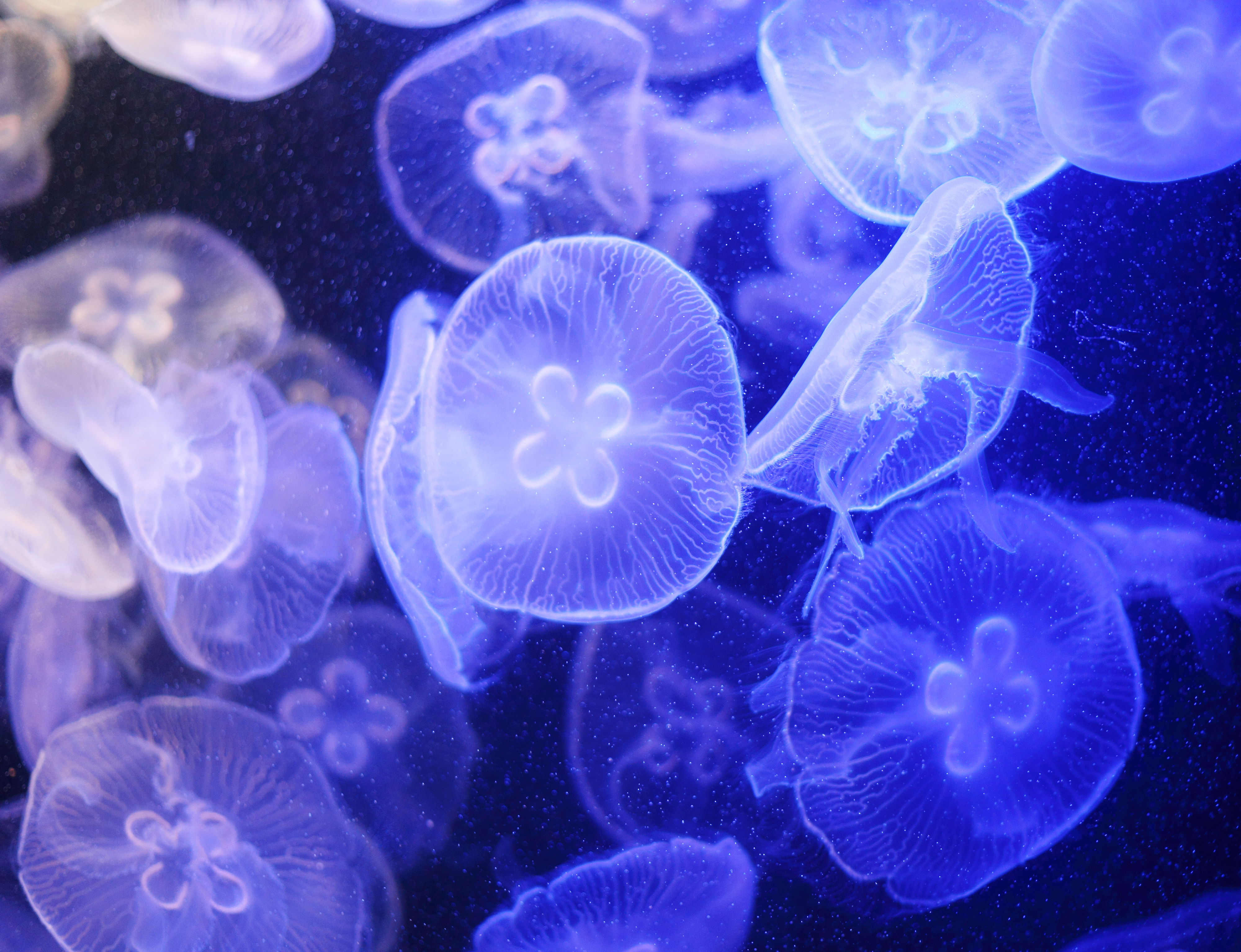Cnidarian, << ny DAIR ee uhn, >> is the name of a group of soft-bodied water animals. The group includes the hydras, hydroids, jellyfish, sea fans, sea anemones, and corals. These animals make up the phylum (large group) called Cnidaria. There are thousands of species (kinds) of cnidarians, and most of them live in the sea.

The body of a cnidarian may be shaped like a cylinder, a bell, or an umbrella. The mouth opens at one end and leads to a digestive cavity. Every cnidarian has at least two layers of cells that form its body wall. An outer layer makes up the body covering, and an inner layer lines the digestive cavity. Many cnidarians have a third, or middle, layer consisting of a stiff, jellylike material that helps support the animal.
A medusa, or jellyfish, is a cnidarian that has a bell- or umbrella-shaped body. Its mouth is at the underside of the body. Tentacles with special stinging cells hang downward from the body’s ringlike edge. Medusas swim about freely in the sea.
A polyp is a cnidarian that has a body shaped like a hollow cylinder. A polyp lives with one end of its body attached to the sea bottom. The mouth and tentacles extend upward at the other end. Polyps may exist individually or may live together in colonies. Colonies are produced when polyps form buds that detach or partially detach to become new polyps. Hydras and sea anemones are examples of individual polyps, and hydroids and most corals are colony-forming polyps.
Some cnidarians have either medusa or polyp stages, or both, in their life cycles. Many medusas are produced from special polyp buds that eventually break free and swim away. Then the medusas produce eggs and sperm that unite and develop into polyps.
